The Effect of a Structured Intervention to Improve Motor Skills in Preschool Children: Results of a Randomized Controlled Trial Nested in a Cohort Study of Danish Preschool Children, the MiPS Study
Abstract
:1. Background
2. Methods
2.1. Design
2.2. Setting
2.3. Participants
2.3.1. Participating Preschools
2.3.2. Recruitment of Children
2.4. Randomization
2.5. Follow Up
2.6. Data Collection Methods
2.7. Intervention
2.8. Implementation
2.9. Competency Development
2.10. Variables
Objectively Measured Motor Skills
- Manual dexterity: a one-hand posting task (Posting Coins), a timed bimanual task (Threading Beads), and an untimed drawing task (Drawing Trail).
- Ball skills: throwing an object to a target (Throwing Beanbag onto Mat) and catching an object using both hands (Catching Beanbag).
- Balance skills: a static balance task (One-leg Balance) and two dynamic tasks involving sustained, controlled movement (Walking Heels Raised), and more explosive action (Jumping on Mat).
2.11. Trial Registration
3. Covariates
Sample Size Calculation
4. Analyses
5. Results
5.1. Descriptive Analyses
5.2. Change Scores
5.3. Multilevel Models
6. Discussion
7. Conclusions
Supplementary Materials
Author Contributions
Funding
Institutional Review Board Statement
Informed Consent Statement
Data Availability Statement
Acknowledgments
Conflicts of Interest
Abbreviations
| Dept. | Department |
| MiPS | Motor Skills in Preschool |
| DK | Denmark |
| YMCA | Young Men’s Christian Association |
| RCT | Randomized Controlled trial |
| MABC-2 | Movement Assessment Battery for Children, version 2 |
| I | Intervention group |
| C | Control group |
| non-RCT | Participating in the cohort but not the RCT |
| FU | Follow-up |
References
- Callahue, D.L.; Ozmun, J.C. Motor Development: A Theoretical Model. Understanding Motor Development: Infants, Children, Adolescents, Adults, 5th ed.; McGraw-Hill: New York, NY, USA, 2002. [Google Scholar]
- Lubans, D.R.; Morgan, P.J.; Cliff, D.P.; Barnett, L.M.; Okely, A.D. Fundamental movement skills in children and adolescents: Review of associated health benefits. Sports Med. 2010, 40, 1019–1035. [Google Scholar] [CrossRef] [PubMed] [Green Version]
- Fisher, A.; Reilly, J.J.; Kelly, L.A.; Montgomery, C.; Williamson, A.; Paton, J.Y.; Grant, S. Fundamental movement skills and habitual physical activity in young children. Med. Sci. Sports Exerc. 2005, 37, 684–688. [Google Scholar] [CrossRef]
- Williams, H.G.; Pfeiffer, K.A.; O’Neill, J.R.; Dowda, M.; McIver, K.L.; Brown, W.H.; Pate, R.R. Motor skill performance and physical activity in preschool children. Obesity 2008, 16, 1421–1426. [Google Scholar] [CrossRef]
- Lloyd, M.; Saunders, T.J.; Bremer, E.; Tremblay, M.S. Long-term importance of fundamental motor skills: A 20-year follow-up study. Adapt. Phys. Activ. Q 2014, 31, 67–78. [Google Scholar] [CrossRef]
- Okely, A.D.; Booth, M.L.; Patterson, J.W. Relationship of physical activity to fundamental movement skills among adolescents. Med. Sci. Sports Exerc. 2001, 33, 1899–1904. [Google Scholar] [CrossRef] [PubMed]
- Morano, M.; Colella, D.; Caroli, M. Gross motor skill performance in a sample of overweight and non-overweight preschool children. Int. J. Pediatric Obes. IJPO Off. J. Int. Assoc. Study Obes. 2011, 6 (Suppl. 2), 42–46. [Google Scholar] [CrossRef]
- D’Hondt, E.; Deforche, B.; Vaeyens, R.; Vandorpe, B.; Vandendriessche, J.; Pion, J.; Philippaerts, R.; de Bourdeaudhuij, I.; Lenoir, M. Gross motor coordination in relation to weight status and age in 5- to 12-year-old boys and girls: A cross-sectional study. Int. J. Pediatric Obes. IJPO Off. J. Int. Assoc. Study Obes. 2011, 6, e556–e564. [Google Scholar] [CrossRef] [PubMed]
- Krombholz, H. Motor and cognitive performance of overweight preschool children. Percept. Mot. Ski. 2013, 116, 40–57. [Google Scholar] [CrossRef]
- Krombholz, H. Physical performance in relation to age, sex, birth order, social class, and sports activities of preschool children. Percept. Mot. Ski. 2006, 102, 477–484. [Google Scholar] [CrossRef]
- Vukovic, M.; Vukovic, I.; Stojanovik, V. Investigation of language and motor skills in Serbian speaking children with specific language impairment and in typically developing children. Res. Dev. Disabil. 2010, 31, 1633–1644. [Google Scholar] [CrossRef]
- Viholainen, H.; Ahonen, T.; Lyytinen, P.; Cantell, M.; Tolvanen, A.; Lyytinen, H. Early motor development and later language and reading skills in children at risk of familial dyslexia. Dev. Med. Child Neurol. 2006, 48, 367–373. [Google Scholar] [CrossRef]
- Webster, R.I.; Majnemer, A.; Platt, R.W.; Shevell, M.I. Motor function at school age in children with a preschool diagnosis of developmental language impairment. J. Pediatr. 2005, 146, 80–85. [Google Scholar] [CrossRef]
- Iverson, J.M.; Braddock, B.A. Gesture and motor skill in relation to language in children with language impairment. J. Speech Lang Hear Res. 2011, 54, 72–86. [Google Scholar] [CrossRef]
- Van der Leij, A.; van Bergen, E.; van Zuijen, T.; de Jong, P.; Maurits, N.; Maassen, B. Precursors of developmental dyslexia: An overview of the longitudinal Dutch Dyslexia Programme study. Dyslexia 2013, 19, 191–213. [Google Scholar] [CrossRef] [PubMed]
- Diamond, A.; Lee, K. Interventions shown to aid executive function development in children 4 to 12 years old. Science 2011, 333, 959–964. [Google Scholar] [CrossRef] [PubMed] [Green Version]
- Viholainen, H.; Aro, T.; Purtsi, J.; Tolvanen, A.; Cantell, M. Adolescents’ school-related self-concept mediates motor skills and psychosocial well-being. Br. J. Educ. Psychol. 2014, 84, 268–280. [Google Scholar] [CrossRef] [Green Version]
- Branta, C.; Haubenstricker, J.; Seefeldt, V. Age changes in motor skills during childhood and adolescence. Exerc. Sport Sci. Rev. 1984, 12, 467–520. [Google Scholar] [CrossRef]
- Cantell, M.H.S.M.; Ahonen, T.P. Clumsiness in Adolescence: Educational, Motor and Social Outcomes of Motor Delay Detected at 5 Years. Adapt. Phys. Act. Qyart 1994, 11, 115–129. [Google Scholar] [CrossRef]
- Logan, S.W.; Robinson, L.E.; Wilson, A.E.; Lucas, W.A. Getting the fundamentals of movement: A meta-analysis of the effectiveness of motor skill interventions in children. Child Care Health Dev. 2012, 38, 305–315. [Google Scholar] [CrossRef]
- Van Capelle, A.; Broderick, C.R.; van Doorn, N.; Ward, R.E.; Parmenter, B.J. Interventions to improve fundamental motor skills in pre-school aged children: A systematic review and meta-analysis. J. Sci. Med. Sport Sports Med. Aust. 2017, 20, 658–666. [Google Scholar] [CrossRef]
- Veldman, S.L.; Jones, R.A.; Okely, A.D. Efficacy of gross motor skill interventions in young children: An updated systematic review. BMJ Open Sport Exerc. Med. 2016, 2, e000067. [Google Scholar] [CrossRef]
- Riethmuller, A.M.; Jones, R.; Okely, A.D. Efficacy of interventions to improve motor development in young children: A systematic review. Pediatrics 2009, 124, e782–e792. [Google Scholar] [CrossRef]
- Wick, K.; Leeger-Aschmann, C.S.; Monn, N.D.; Radtke, T.; Ott, L.V.; Rebholz, C.E.; Cruz, S.; Gerber, N.; Schmutz, E.A.; Puder, J.J.; et al. Interventions to Promote Fundamental Movement Skills in Childcare and Kindergarten: A Systematic Review and Meta-Analysis. Sports Med. 2017, 47, 2045–2068. [Google Scholar] [CrossRef] [Green Version]
- Lindelof, A.; Nielsen, C.V.; Pedersen, B.D. A Qualitative, Longitudinal Study Exploring Obese Adolescents’ Attitudes Towards Physical Activity. J. Phys. Act. Health 2012, 10, 113–121. [Google Scholar] [CrossRef]
- Rend-Og-Hop-Med-Oliver. Available online: http://www.rendoghop.info/ (accessed on 1 June 2015).
- Hestbaek, L.; Andersen, S.T.; Skovgaard, T.; Olesen, L.G.; Elmose, M.; Bleses, D.; Andersen, S.C.; Lauridsen, H.H. Influence of motor skills training on children’s development evaluated in the Motor skills in PreSchool (MiPS) study-DK: Study protocol for a randomized controlled trial, nested in a cohort study. Trials 2017, 18, 400. [Google Scholar] [CrossRef] [Green Version]
- REDCap, Research Electronic Data Capture. Available online: https://www.project-redcap.org/ (accessed on 15 July 2021).
- OPEN, Open Patient Data Explarative Network. Available online: https://www.sdu.dk/da/om_sdu/institutter_centre/klinisk_institut/forskning/forskningsenheder/open (accessed on 15 July 2021).
- Conklin, J.; Stolee, P. A model for evaluating knowledge exchange in a network context. Can. J. Nurs. Res. 2008, 40, 116–124. [Google Scholar]
- Klein-Wengel, T.T.; Smedegaard, N.J.; Skovgaard, S. Translating vision into reality: The influence of local leadership when implementing adult-initiated motor skill and physical activity in preschools. Int. J. Environ. Res. Public Health 2021. Submitted, in peer review. [Google Scholar]
- Nielsen, J.V.; Klein-Wengel, T.T.; Troelsen, J. Evaluation and Program Planning. In it for the long haul: Evaluating a preschool programme implementing and maintaining three hours of weekly PA and motor skill development across a two-year period. Eval. Prog. Plan. 2021. Submitted, in peer review. [Google Scholar]
- Chow, S.M.; Henderson, S.E. Interrater and test-retest reliability of the Movement Assessment Battery for Chinese preschool children. Am. J. Occup. Ther. 2003, 57, 574–577. [Google Scholar] [CrossRef] [PubMed] [Green Version]
- Chow, S.M.; Henderson, S.E.; Barnett, A.L. The Movement Assessment Battery for Children: A comparison of 4-year-old to 6-year-old children from Hong Kong and the United States. Am. J. Occup. Ther. 2001, 55, 55–61. [Google Scholar] [CrossRef] [PubMed] [Green Version]
- Van Waelvelde, H.; Peersman, W.; Lenoir, M.; Smits Engelsman, B.C.; Henderson, S.E. The movement assessment battery for children: Similarities and differences between 4- and 5-year-old children from Flanders and the United States. Pediatr. Phys. Ther. 2008, 20, 30–38. [Google Scholar] [CrossRef] [PubMed]
- Ellinoudis, T.; Evaggelinou, C.; Kourtessis, T.; Konstantinidou, Z.; Venetsanou, F.; Kambas, A. Reliability and validity of age band 1 of the Movement Assessment Battery for Children—Second edition. Res. Dev. Disabil. 2011, 32, 1046–1051. [Google Scholar] [CrossRef]
- Kakebeeke, T.H.; Knaier, E.; Kochli, S.; Chaouch, A.; Rousson, V.; Kriemler, S.; Jenni, O.G. Comparison between the Movement ABC-2 and the Zurich Neuromotor Assessment in Preschool Children. Percept. Mot. Skills 2016, 123, 687–701. [Google Scholar] [CrossRef] [PubMed]
- Larsen, K.T.; Huang, T.; Moller, N.C.; Andersen, L.B.; Ried-Larsen, M. Effectiveness of a one-year multi-component day-camp intervention for overweight children: Study protocol of the Odense overweight intervention study (OOIS). BMC Public Health 2014, 14, 313. [Google Scholar] [CrossRef] [PubMed] [Green Version]
- Cools, W.; Martelaer, K.D.; Samaey, C.; Andries, C. Movement skill assessment of typically developing preschool children: A review of seven movement skill assessment tools. J. Sports Sci. Med. 2009, 8, 154–168. [Google Scholar] [PubMed]
- Henderson, S.E.; Sugden, D.A. Movement Assessment Battery for Children; Therapy Skill Builders: Kent, UK, 1992. [Google Scholar]
- Henderson, S.E.; Sugden, D.A.; Barnett, A.L. Movement Assessment Battery for Children-2. Examiner’s Manual; Harcourt Assessment: London, UK, 2007. [Google Scholar]
- ISCED (2012) International Standard Classifiation of Education ISED2011; UNESO Institute for Statistics, Montreal: Montreal, QC, Canada, 2012.
- What Are Equivalence Scales? Available online: https://www.oecd.org/els/soc/OECD-Note-EquivalenceScales.pdf (accessed on 3 May 2021).
- Olesen, L.G.; Kristensen, P.L.; Ried-Larsen, M.; Grontved, A.; Froberg, K. Physical activity and motor skills in children attending 43 preschools: A cross-sectional study. BMC Pediatr. 2014, 14, 229. [Google Scholar] [CrossRef] [PubMed] [Green Version]
- In, J. Considerations when calculating the sample size for an inequality test. Korean J. Anesthesiol. 2016, 69, 327–331. [Google Scholar] [CrossRef] [Green Version]
- Piek, J.P.; McLaren, S.; Kane, R.; Jensen, L.; Dender, A.; Roberts, C.; Rooney, R.; Packer, T.; Straker, L. Does the Animal Fun program improve motor performance in children aged 4–6 years? Hum. Mov. Sci. 2013, 32, 1086–1096. [Google Scholar] [CrossRef]
- Roth, K.; Kriemler, S.; Lehmacher, W.; Ruf, K.C.; Graf, C.; Hebestreit, H. Effects of a Physical Activity Intervention in Preschool Children. Med. Sci. Sports Exerc. 2015, 47, 2542–2551. [Google Scholar] [CrossRef] [Green Version]
- Bellows, L.L.; Davies, P.L.; Anderson, J.; Kennedy, C. Effectiveness of a physical activity intervention for Head Start preschoolers: A randomized intervention study. Am. J. Occup. Ther. 2013, 67, 28–36. [Google Scholar] [CrossRef] [Green Version]
- Bardid, F.; Deconinck, F.J.; Descamps, S.; Verhoeven, L.; De Pooter, G.; Lenoir, M.; D’Hondt, E. The effectiveness of a fundamental motor skill intervention in pre-schoolers with motor problems depends on gender but not environmental context. Res. Dev. Disabil. 2013, 34, 4571–4581. [Google Scholar] [CrossRef] [PubMed] [Green Version]
- Krneta, Z.; Casals, C.; Bala, G.; Madic, D.; Pavlovic, S.; Drid, P. Can Kinesiological Activities Change “Pure” Motor Development in Preschool Children during One School Year? Coll. Antropol. 2015, 39 (Suppl. 1), 35–40. [Google Scholar] [PubMed]
- Donath, L.; Faude, O.; Hagmann, S.; Roth, R.; Zahner, L. Fundamental movement skills in preschoolers: A randomized controlled trial targeting object control proficiency. Child Care Health Dev. 2015, 41, 1179–1187. [Google Scholar] [CrossRef] [PubMed]
- Valentini, N.C.; Oliveira, M.A.; Pangelinan, M.M.; Whitall, J.; Clark, J.E. Can the MABC discriminate and predict motor impairment? A comparison of Brazilian and American children. Int. J. Ther. Rehabil. 2017, 24, 105–113. [Google Scholar] [CrossRef]
- Kirk, M.A.; Rhodes, R.E. Motor skill interventions to improve fundamental movement skills of preschoolers with developmental delay. Adapt. Phys. Activ. Q 2011, 28, 210–232. [Google Scholar] [CrossRef] [PubMed] [Green Version]
- Ferreira, L.; Godinez, I.; Gabbard, C.; Vieira, J.L.L.; Cacola, P. Motor development in school-age children is associated with the home environment including socioeconomic status. Child Care Health Dev. 2018, 44, 801–806. [Google Scholar] [CrossRef] [PubMed]
- Cairney, J.; Hay, J.A.; Faught, B.E.; Hawes, R. Developmental coordination disorder and overweight and obesity in children aged 9–14 y. Int. J. Obes. 2005, 29, 369–372. [Google Scholar] [CrossRef] [Green Version]
- Cairney, J.; Hay, J.A.; Faught, B.E.; Wade, T.J.; Corna, L.; Flouris, A. Developmental coordination disorder, generalized self-efficacy toward physical activity, and participation in organized and free play activities. J. Pediatr. 2005, 147, 515–520. [Google Scholar] [CrossRef]
- Mandich, A.D.; Polatajko, H.J.; Rodger, S. Rites of passage: Understanding participation of children with developmental coordination disorder. Hum. Mov. Sci. 2003, 22, 583–595. [Google Scholar] [CrossRef]
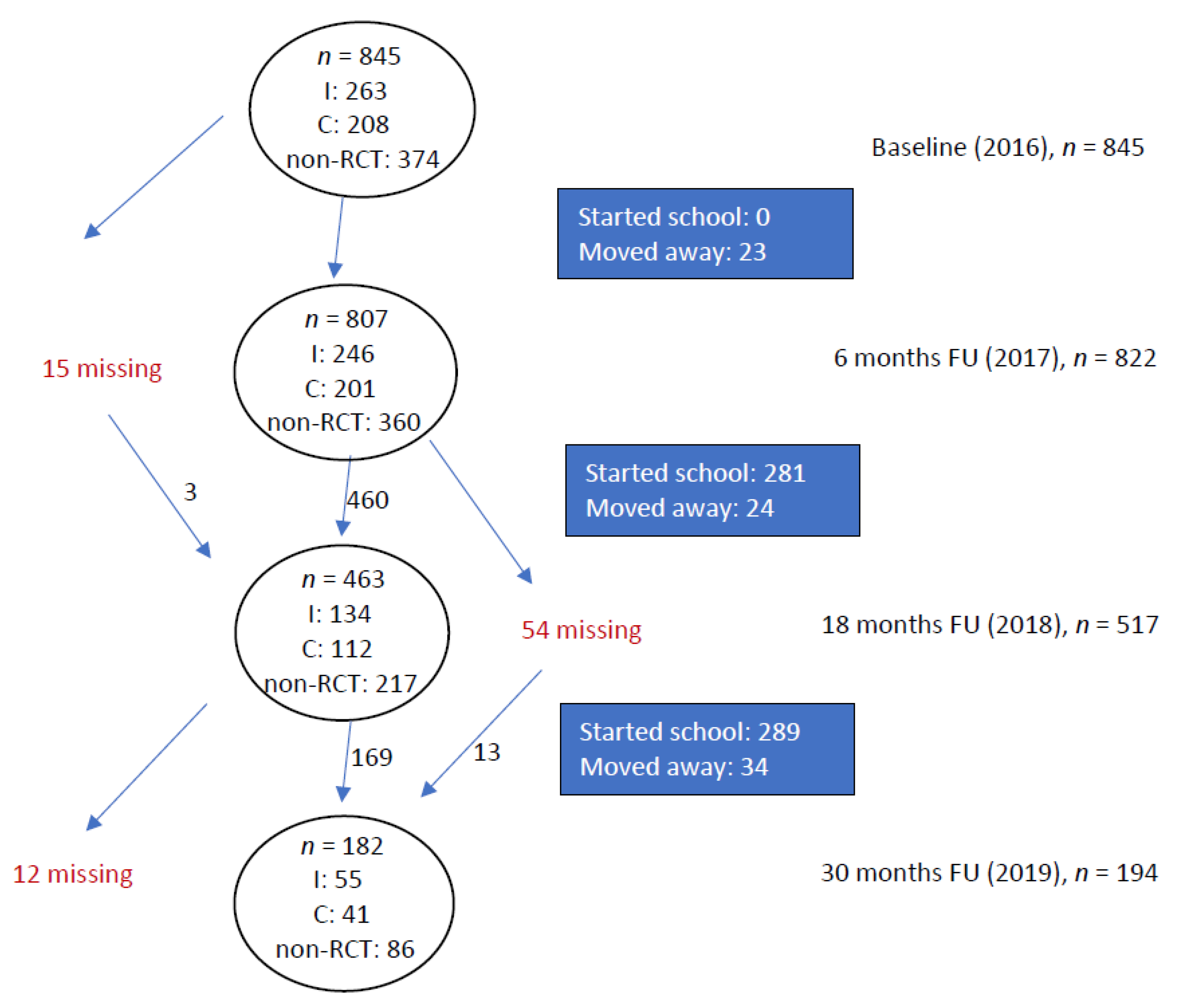
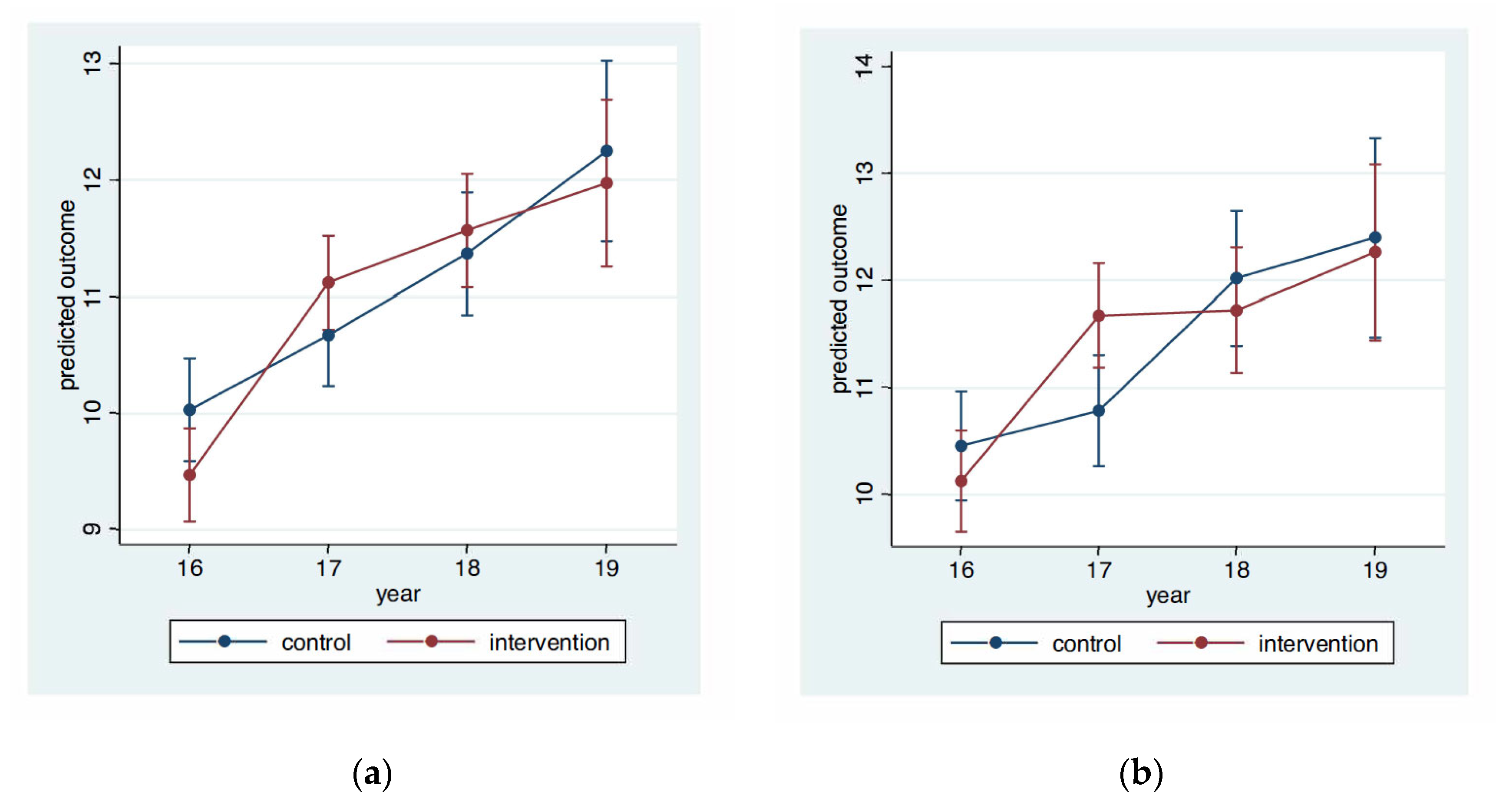
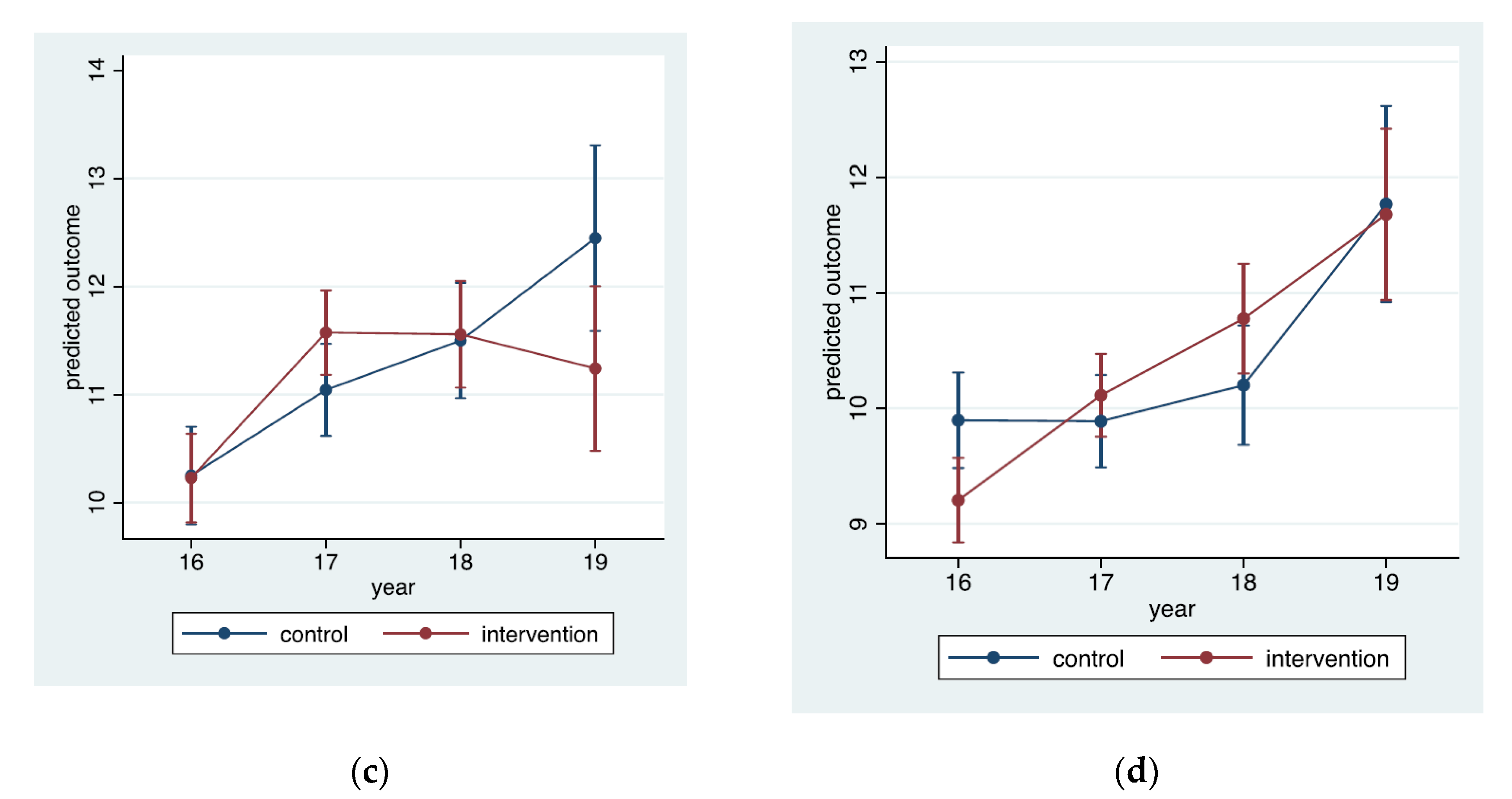
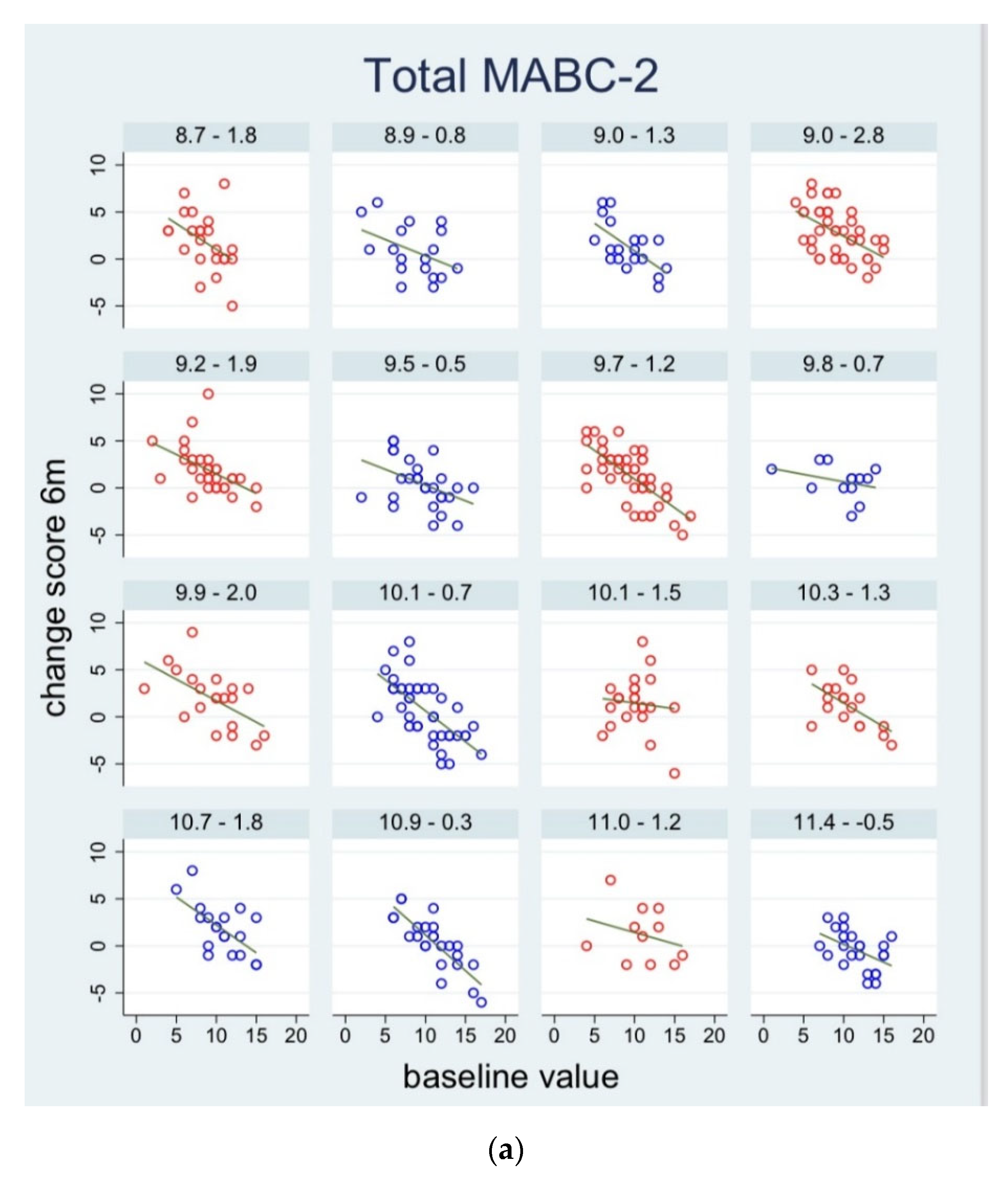
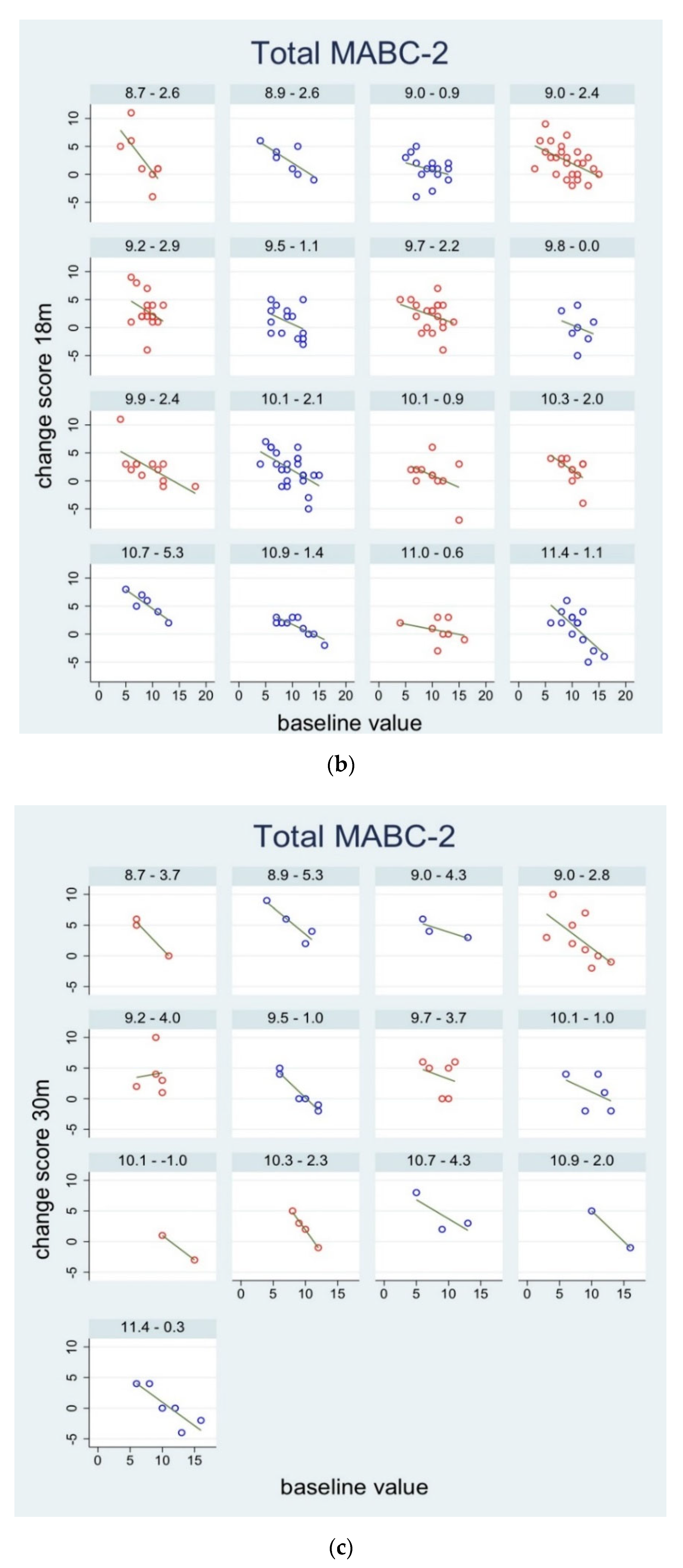
| Bodily Skills | What and How? (Examples) | Why? (Examples) |
|---|---|---|
| Motor function | Gross motor challenges such as creeping, crawling, running, jumping, hopscotch, jumping, climbing | Gross and fine motor skills are important because they form the basis of many everyday activities and are an important factor for the child’s enjoyment of physical activity and thereby also the amount of the child’s physical expression. |
| Fine motor challenges such as holding a pencil, handling small objects like beads and construction toys or catching insects | ||
| Coordination Exercises such as crawling exercises, cross-body movements, “Angels in the Snow”, jumping jack and throwing, gripping and kicking exercises. Other examples can be rhythm and dance. | Coordination is the foundation for a long series of specific skills such as throwing and catching and many everyday activities such as pouring water into a glass. | |
| Different dynamic and static balance exercises such as walking on a line and standing on one leg. | A good balance is, amongst other things, important in relation to avoiding falls and injuries, and affects many daily activities such as putting on clothes and shoes. | |
| Sensing | Challenges of the following senses: | We use all of our senses to collect and process the information and experiences that we give our body and our brain. The senses are thus to control and develop our balance, coordination and motor skills and are thereby important to be able to perform both defined work routines and everyday activities. |
| The vestibular sense is stimulated for example by rolling, turning around, doing somersaults and swinging. | ||
| The tactile sense is stimulated by touch from others, for example, in the form of massage and by touching various materials and objects of different size, shape and temperature. | ||
| The kinesthetic sense is stimulated by challenging the body’s joints, muscles and tendons in different ways, for example, by bending, stretching and pushing, lifting objects of different weights and by fast and slow movements. | ||
| Relaxation | The children will also experience other types of physical stimulus, namely relaxation and unwinding. It can, for example, be through massage, children’s yoga or similar. | Relaxation is a good counterpart to dynamic activity, which together promote body consciousness in children. At the same time, relaxation helps to create calmer children and fewer conflicts. |
| Non-RCT | RCT | Total | p-Value | Missing/n (%) | |
|---|---|---|---|---|---|
| n (%) | 375 (44.4) | 470 (55.6) | 845 (100.0) | 0/845 (0.00) | |
| Age, mean years (sd) | 4.39 (0.84) | 4.44 (0.82) | 4.41 (0.83) | 0.38 | 1/845 (0.01) |
| Sex | |||||
| Boys, n (%) | 193 (51.6) | 240 (51.0) | 433 (51.2) | ||
| Girls, n (%) | 182 (48.4) | 230 (49.0) | 412 (48.8) | 0.85 | 0/845 (0.00) |
| Mother’s highest education: | |||||
| secondary school, n (%) | 14 (4.5) | 13 (3.2) | 27 (3.8) | ||
| low or vocational, n (%) | 91 (29.1) | 131 (32.3) | 222 (30.9) | ||
| medium or high, n (%) | 208 (66.5) | 262 (64.5) | 470 (65.4) | 0.52 | 126/845 (14.88) |
| Father’s highest education: | |||||
| secondary school, n (%) | 7 (2.6) | 20 (5.4) | 27 (4.2) | ||
| low or vocational, n (%) | 98 (35.8) | 154 (41.8) | 252 (39.3) | ||
| medium or high, n (%) | 169 (61.7) | 194 (52.7) | 363 (56.5) | 0.04 | 203/845 (25.86) |
| Equivalized income, mean DKK (sd) | 315,787 (167,551) | 319,686 (145,693) | 318,367 (155,258) | 0.76 | 177/845 (20.90) |
| Baseline, n = 471 | 6 Months, n = 447 | 18 Months, n = 246 | 30 Months, n = 96 | |
|---|---|---|---|---|
| Age | 4.44 (0.82) | 4.43 (0.81) | 3.91(0.53) | 3.31 (0.21) |
| Sex (% male) | 51.2 | 50.5 | 51.1 | 55.7 |
| Weight (kg) | 18.27 (3.07) | 18.24 (2.85) | 17.19 (2.67) | 15.72 (1.93) |
| Height (cm) | 106.50 (7.38) | 106.50 (7.29) | 102.93 (6.21) | 98.06 (4.71) |
| Waist circumference (cm) | 52.86 (3.85) | 52.83 (3.58) | 52.33 (3.88) | 51.42 (3.41) |
| Total MABC-2 | 9.80 (3.12) | 9.82 (3.12) | 9.49 (2.86) | 9.30 (3.01) |
| MABC-2 man. dex. | 10.26 (3.12) | 10.20 (3.18) | 10.14 (2.93) | 9.35 (3.26) |
| MABC-2 balance | 10.26 (3.11) | 10.26 (3.09) | 10.01 (3.13) | 9.82 (2.73) |
| MABC-2 aim/catch | 9.52 (3.01) | 9.50 (3.01) | 9.28 (2.78) | 9.10 (3.02) |
| Baseline | 6 Months | 18 Months | 30 Months | |||||
|---|---|---|---|---|---|---|---|---|
| Intervention n = 262 | Control n = 208 | Intervention n = 246 | Control n = 201 | Intervention n = 130 | Control n = 112 | Intervention n = 55 | Control n = 41 | |
| Age (years) | 4.42 | 4.46 | 4.95 | 5.00 | 5.49 | 5.45 | 5.85 | 5.84 |
| Sex (% male) | 52.29 | 49.04 | 52.03 | 48.26 | 50.00 | 50.00 | 56.36 | 56.10 |
| Weight (kg) | 18.28 | 18.27 | 19.45 | 19.33 | 21.08 | 20.53 | 21.83 | 21.22 |
| Height (cm) | 106.38 | 106.64 | 110.31 | 110.74 | 114.43 | 114.17 | 116.90 | 116.44 |
| Waist circumference (cm) | 52.88 | 52.84 | 52.32 | 52.26 | 54.39 | 54.13 | 56.77 | 55.40 |
| Total MABC-2 | 9.56 | 10.09 | 11.12 | 10.71 | 11.45 | 11.23 | 11.43 | 12.08 |
| MABC-2 man. dex. | 10.09 | 10.48 | 11.60 | 10.82 | 11.64 | 11.93 | 11.58 | 11.85 |
| MABC-2 balance | 10.27 | 10.26 | 11.61 | 11.04 | 11.50 | 11.44 | 11.21 | 12.59 |
| MABC-2 aim/catch | 9.22 | 9.89 | 10.09 | 9.88 | 10.66 | 10.09 | 11.28 | 11.61 |
| 6 Months | 18 Months | 30 Months | |||||||
|---|---|---|---|---|---|---|---|---|---|
| Intervention n = 214 * | Control n = 184 * | p-Values ** | Intervention n = 109 * | Control n= 97 * | p-Values ** | Intervention n = 31 * | Control n = 30 * | p-Values ** | |
| Objectively measured | |||||||||
| Total MABC-2 | 1.75 (2.74) | 0.65 (2.68) | 0.004 | 2.14 (2.95) | 1.63 (2.86) | 0.225 | 2.87 (3.36) | 2.37 (3.33) | 0.574 |
| Manual dexterity | 1.59 (3.09) | 0.30 (2.92) | 0.002 | 1.45 (3.19) | 1.66 (3.07) | 0.568 | 2.44 (4.08) | 2.45 (3.63) | 0.996 |
| Balance | 1.31 (3.23) | 0.79 (3.05) | 0.204 | 1.57 (3.45) | 1.55 (3.62) | 0.970 | 1.56 (3.81) | 2.77 (3.68) | 0.255 |
| Aim/catch | 0.97 (3.21) | 0.02 (3.23) | 0.055 | 1.57 (3.47) | 0.42 (3.05) | 0.023 | 2.78 (3.48) | 1.86 (3.92) | 0.334 |
| β-Coefficient (95% CI) | p | β-Coefficient (95% CI) | p | β-Coefficient (95% CI) | p | |
|---|---|---|---|---|---|---|
| All children included in the RCT | 6 Months, n = 398 * | 18 Months, n = 206 * | 30 Months, n = 61 * | |||
| Total MABC-2 | 0.80 (0.29; 1.31) | 0.002 | 0.41 (−0.27; 1.10) | 0.237 | 0.14 (−1.10; 1.38) | 0.823 |
| MABC-2 Manual dexterity | 1.06 (0.46; 1.66) | 0.001 | −0.19 (−0.95; 0.57) | 0.624 | −0.13 (−0.31; 1.05) | 0.829 |
| MABC-2 Balance | 0.55 (−0.09; 1.18) | 0.093 | 0.11 (−0.71; 0.94) | 0.784 | −0.68 (−0.03; 1.67) | 0.323 |
| MABC-2 Aim and catch | 0.49 (−0.05; 1.03) | 0.073 | 0.84 (0.14; 1.54) | 0.019 | 0.25 (−0.92; 1.42) | 0.676 |
| Only children with risk of motor deficiency disorder, i.e., scores below the 15th percentile, included. | 6 months, n = 63 * | 18 months, n = 34 * | 30 months, n = 13 * | |||
| Total MABC-2 | 0.41 (−0.86; 1.69) | 0.527 | 1.42 (−0.25; 3.09) | 0.096 | 0.79 (−1.61; 3.19) | 0.517 |
| MABC-2 Manual dexterity | 0.94 (−0.72; 2.61) | 0.268 | −0.07 (−0.46; 2.33) | 0.956 | −0.01 (−0.07; 3.05) | 0.996 |
| MABC-2 Balance | 0.18 (−1.38; 1.75) | 0.819 | 0.62 (−1.18; 2.42) | 0.501 | −0.31 (−0.89; 3.27) | 0.865 |
| MABC-2 Aim and catch | 0.18 (−1.66; 2.02) | 0.849 | 0.54 (−1.71; 2.79) | 0.639 | −2.61 (−0.39; 0.17) | 0.066 |
| Only children from preschools with mean score below the median at baseline are included in analyses, n = 245 | 6 months, n = 231 * | 18 months, n = 125 * | 30 months, n = 54 * | |||
| Total MABC-2 | 1.07 (0.38; 1.76) | 0.002 | 1.32 (0.35; 2.30) | 0.008 | 0.78 (−0.94; 2.51) | 0.374 |
| MABC-2 Manual dexterity | 1.75 (1.06; 2.43) | 0.000 | −0.08 (−0.02; 0.87) | 0.874 | 0.73 (−0.93; 2.39) | 0.386 |
| MABC-2 Balance | 0.22 (−0.67; 1.10) | 0.628 | 0.59 (−0.50; 1.68) | 0.286 | 0.04 (−1.61; 1.70) | 0.959 |
| MABC-2 Aim and catch | 0.23 (−0.69; 1.15) | 0.625 | 1.84 (0.68; 2.99) | 0.002 | −1.01 (−0.98; 0.82) | 0.267 |
Publisher’s Note: MDPI stays neutral with regard to jurisdictional claims in published maps and institutional affiliations. |
© 2021 by the authors. Licensee MDPI, Basel, Switzerland. This article is an open access article distributed under the terms and conditions of the Creative Commons Attribution (CC BY) license (https://creativecommons.org/licenses/by/4.0/).
Share and Cite
Hestbaek, L.; Vach, W.; Andersen, S.T.; Lauridsen, H.H. The Effect of a Structured Intervention to Improve Motor Skills in Preschool Children: Results of a Randomized Controlled Trial Nested in a Cohort Study of Danish Preschool Children, the MiPS Study. Int. J. Environ. Res. Public Health 2021, 18, 12272. https://doi.org/10.3390/ijerph182312272
Hestbaek L, Vach W, Andersen ST, Lauridsen HH. The Effect of a Structured Intervention to Improve Motor Skills in Preschool Children: Results of a Randomized Controlled Trial Nested in a Cohort Study of Danish Preschool Children, the MiPS Study. International Journal of Environmental Research and Public Health. 2021; 18(23):12272. https://doi.org/10.3390/ijerph182312272
Chicago/Turabian StyleHestbaek, Lise, Werner Vach, Sarah Thurøe Andersen, and Henrik Hein Lauridsen. 2021. "The Effect of a Structured Intervention to Improve Motor Skills in Preschool Children: Results of a Randomized Controlled Trial Nested in a Cohort Study of Danish Preschool Children, the MiPS Study" International Journal of Environmental Research and Public Health 18, no. 23: 12272. https://doi.org/10.3390/ijerph182312272
APA StyleHestbaek, L., Vach, W., Andersen, S. T., & Lauridsen, H. H. (2021). The Effect of a Structured Intervention to Improve Motor Skills in Preschool Children: Results of a Randomized Controlled Trial Nested in a Cohort Study of Danish Preschool Children, the MiPS Study. International Journal of Environmental Research and Public Health, 18(23), 12272. https://doi.org/10.3390/ijerph182312272






